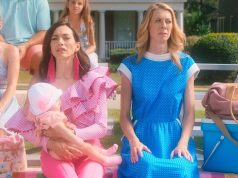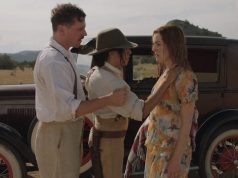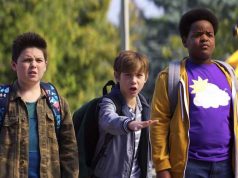Here’s a problem I bet you never thought about before: When someone is transsexual, maybe a man in the process of becoming a woman, which prison does he/she go to? The men’s or the women’s?
Filmmakers Janet Baus, Dan Hunt and Reid Williams have thought about the problem, though, and they spent three years making a movie about it “Cruel and Unusual” tells the stories of several male-to-female transsexuals who were placed in men’s facilities even though they identify themselves — and often have most of the outward appearances of — women.
The title of the film suggests the way prisons deal with the problem: They don’t. It doesn’t matter if your hormone treatments have given you a women’s voice, face and breasts, looking for all the world like a complete woman. If your equipment down south is still male — meaning you haven’t had the big surgery yet — you’re a man, as far as prison is concerned, and you go in with the men.
According to the film, 10 percent of male prisoners are raped at some point. Statistics on transsexuals specifically aren’t available, but it’s seems logical that if men are being raped by their fellow inmates, someone who actually looks like a woman would be an even greater target for assault.
Yolanda Valentin (born Daniel Valentin) looks and sounds so much like a woman that you’d never know she’d been born a man. But because of that damning bit of evidence below the beltline, she was put in a men’s prison. Ophelia De’Lonta and Ashley (with no last name given) also appear almost entirely female.
Even worse for some inmates than being placed with men is that most prisons don’t consider hormone treatments necessary medication. Thus the transsexuals are forced to suffer the withdrawals of being without something that their bodies have come to depend on. When a man starts taking estrogen, his body stops producing hormones naturally. Taking him off the medication, then, is like denying hormones to a woman after she’s had a hysterectomy.
Two other transsexuals are featured who are not quite so feminine. Linda Thompson and Anna Connelly both still have manly faces and voices (and genitals), but have long hair and breasts and identify themselves as women. (Linda and Ann weren’t the names they grew up with, obviously; they don’t even mention what their old names were.)
Linda, an oil-rigger by trade, can’t find work looking like a cross-dresser, and is often denied access to shelters and rescue missions. This led her to steal to survive, which led to prison. While in prison, unable to get her hormone treatments, she castrated herself. Lawyers observe that the taxpayers could have shelled out $20 a month for generic hormone therapy, but instead they had to pay tens of thousands of dollars for two trips to the emergency room.
Anna’s story involves her son, whom her ex-wife wouldn’t let her have any contact with after she went to prison. Though the story is sad, it doesn’t relate to the film’s main point, which is what it’s like for transsexuals in prison. As such, it feels like a tangent.
Focus is a problem throughout the film, actually. Though it has the makings of a serious and socially important documentary, and though it has been well-shot and professionally assembled, it often goes down paths like Anna’s that don’t feel relevant to the topic at hand. More about the horrors of life on the inside would serve the film’s purposes better, especially in terms of stirring public outrage. As it is, it’s a good but not great documentary that scratches the surface of a legitimate social problem without going very deep.
B- (1 hr., 5 min.; )





